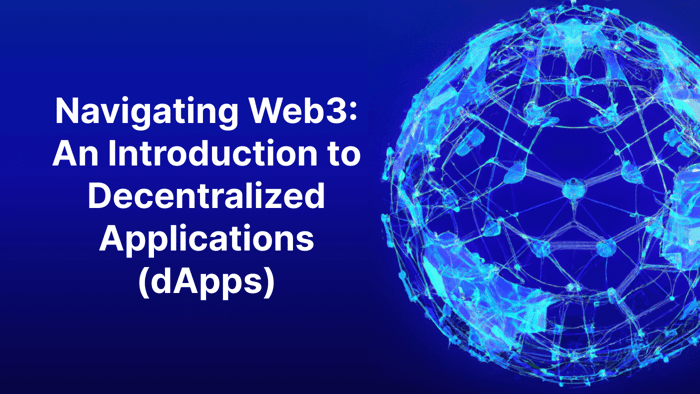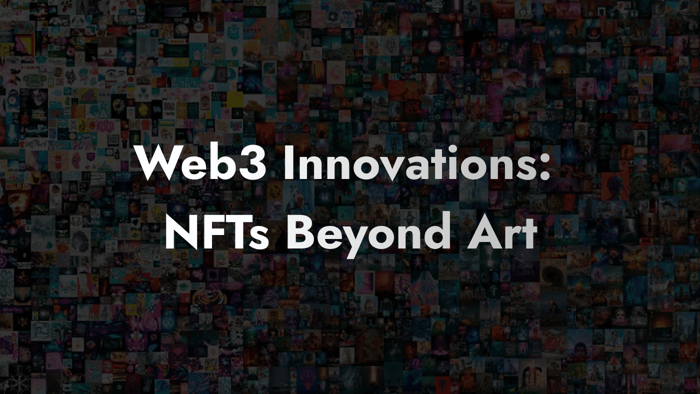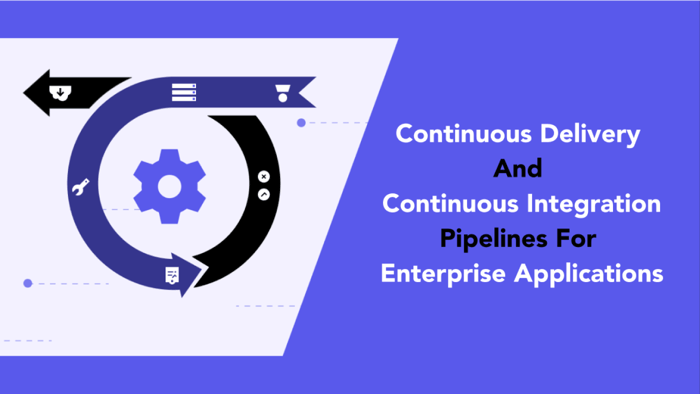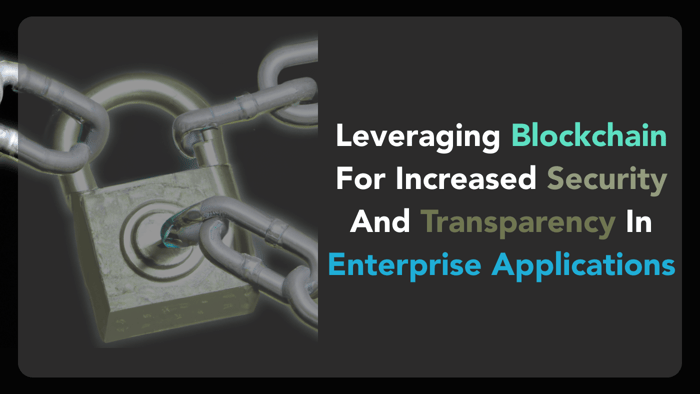Navigate the world of Web3 and learn about decentralized applications.
An invasive wave is sweeping through today's digital space, the arrival of Web3 and decentralized apps (dApps) is taking the entire technology industry with force. This technological frontier promises a world in which individuals have more control over their data, transactions are built on trustless foundations, and transparency is paramount.
Web3 is firmly entrenched in decentralized ideas that strive to solve the limits of traditional web technology. Web3 at its core, is a set of technologies and principles that enable peer-to-peer interactions without the use of intermediaries, resulting in a new era of digital communication.
Decentralized applications, or dApps, are driving this change by leveraging the power of blockchain and distributed ledger technology (DLT). These dApps give rise to a new species of software that specializes in transparency, security, and resistance to censorship. Unlike its centralized counterparts(traditional applications), dApps operate on decentralized networks.
Web3 and dApps are gaining popularity due to their numerous benefits. Users stand to gain enhanced privacy as their personal information finds refuge away from vulnerable centralized servers prone to breaches.
In this article, we will explore the intricate components of Web3, digging deeper into the domain of decentralized applications. We will discuss prominent use cases, provide guidance for navigating the Web3 landscape, and share insights into the exciting future of this cutting-edge technology. By the end of this article, you will have a thorough understanding of Web3, ready to embark on your own explorations into the world of decentralized application development.
Understanding Web3
The concept of Web3 has emerged as a transformative force, promising a decentralized ecosystem that empowers individuals while promoting trust, transparency, and privacy. At its core, Web3 relies on two groundbreaking technologies: blockchain and distributed ledger technology (DLT), which have revolutionized the way information is stored, shared, and accessed.
Web3's ecosystem is a complex yet interconnected landscape, comprising several vital elements that collaborate to create a decentralized internet experience. These components include:
- Blockchain: A distributed and immutable digital ledger, blockchain records transactions across multiple nodes, ensuring transparency, security, and traceability.
- Smart Contracts: These self-executing agreements, coded on a blockchain, automate transactions and enforce predefined rules, eliminating the need for intermediaries.
- Decentralized Storage: Unlike central servers, Web3 relies on decentralized storage systems, enhancing security, privacy, and censorship resistance.
- Identity Solutions: Web3 aims to provide users with self-sovereign digital identities, offering control over personal information through cryptographic protocols.
Understanding the fundamentals of Web3 and its components lays the groundwork for our exploration of decentralized applications (dApps) in the next section.
Decentralized Applications (dApps)
Decentralized applications, commonly referred to as dApps, are a key component of the Web3 ecosystem. These applications leverage the power of blockchain technology and smart contracts to provide a decentralized and transparent user experience.
Decentralized applications are software applications that run on a decentralized network rather than a single centralized server. They are designed to be open source, transparent, and resistant to censorship. Unlike traditional applications, dApps operate autonomously without the need for intermediaries. They also used smart contracts instead of APIs.
Smart contracts are self-executing agreements that automatically execute actions based on predefined conditions. They play a vital role in dApps by enabling trustless interactions between parties. Smart contracts eliminate the need for intermediaries and ensure transparency and immutability in transactions. Solidity is the most widely used programming language for developing smart contracts on blockchain platforms like Ethereum. It allows developers to write smart contracts that define the logic and behavior of their dApps. Solidity is specifically designed to support decentralized application development and provides robust security features.
Benefits of Decentralized Applications
Decentralized applications (dApps) offer several key benefits that set them apart from traditional centralized applications. These advantages contribute to the growing popularity of Web3 and the adoption of dApps in various industries. Some benefits of decentralized applications include:
- Transparency and Immutability: One of the primary advantages of dApps is their transparent and immutable nature. Built on blockchain technology, dApps provide a transparent record of all transactions and activities, which can be accessed by anyone in the network. This transparency ensures accountability and reduces the risk of fraud or manipulation.
- Tokenization: dApps often utilize tokens as a means of value exchange within their ecosystems. Tokenization allows for fractional ownership, enabling individuals to invest in or hold shares of assets that were previously inaccessible. This opens up new avenues for investment opportunities, such as real estate, art, or intellectual property.
- Data Ownership and Control: In traditional web applications, user data is usually stored on centralized servers controlled by a single entity. However, dApps empower users by enabling them to retain ownership and control over their data. With dApps, users have the ability to grant or revoke access to their data as they see fit, reducing the risk of unauthorized use or data breaches.
- Security Features: Decentralized applications are inherently more secure compared to their centralized counterparts. By leveraging blockchain technology and smart contracts, dApps eliminate single points of failure and provide robust security mechanisms. The distributed nature of blockchain ensures that no single entity can alter or tamper with the data stored within a dApp.
- User Privacy: Web3 and dApps prioritize user privacy by design. Unlike traditional web applications that collect and monetize user data, dApps give users greater control over their personal information. With Web3 technologies, users can interact with decentralized services while maintaining their privacy, reducing the risk of their data being exploited for marketing or other purposes.
These benefits are driving the rapid growth and adoption of dApps across various industries.
Popular Use Cases for dApps
Decentralized applications (dApps) have gained significant traction in various industries, offering innovative solutions that leverage the power of blockchain technology and decentralization. Some popular use cases for dApps include:
- Supply Chain Management: One of the most promising use cases for dApps is in supply chain management. By utilizing blockchain technology, dApps enable transparent and immutable tracking of goods throughout the entire supply chain. This ensures trust and accountability among all stakeholders involved, reducing the risk of fraud and counterfeit products.
- Voting Systems: Traditional voting systems often face challenges such as voter fraud and lack of transparency. However, with the help of dApps, secure and transparent voting systems can be created. Each vote is recorded on the blockchain, making it tamper-proof and providing verifiable results.
- Identity Verification: Identity theft is a growing concern in the digital age. dApps can provide a decentralized solution for identity verification by allowing individuals to store their personal information securely on the blockchain. This eliminates the need for centralized authorities and reduces the risk of data breaches.
- Decentralized Finance (DeFi): DeFi has emerged as one of the most popular use cases for dApps. It aims to revolutionize traditional financial systems by providing decentralized alternatives to banking, lending, and investing. DeFi applications enable users to access financial services without intermediaries, offering greater accessibility and inclusivity.
- Gaming: The gaming industry has embraced dApps as they offer unique opportunities for ownership and trading of in-game assets. With blockchain technology, players have true ownership over their digital assets, which can be freely traded or transferred between different games.
- Social Media: Centralized social media platforms often suffer from issues such as data privacy concerns and censorship. dApps provide an alternative by creating decentralized social media platforms where users have control over their data and content, ensuring privacy and freedom of expression.
These are just a few examples of the diverse range of use cases for dApps. As blockchain technology continues to evolve, we can expect to see more innovative applications that leverage the benefits of decentralization.
Navigating Web3: How to Get Started
Web3 is an exciting new frontier in the world of technology, and if you're interested in exploring decentralized applications (dApps), you'll need to know how to navigate this decentralized web. Here are some key steps to get started:
Web3-enabled browsers and their features
Web3-enabled browsers are specifically designed to interact with the decentralized web. These browsers allow users to access dApps and interact with blockchain networks seamlessly. Some popular Web3-enabled browsers include Chrome, Brave, and Opera. Some features of these browsers include:
- Wallet Integration: Web3-enabled browsers often allow wallet extensions, allowing users to securely store and manage their digital assets through their browsers.
- Blockchain Connectivity: These browsers connect to various blockchain networks, enabling users to interact with smart contracts and perform transactions directly from their browser.
- Privacy and Security: Web3-enabled browsers prioritize user privacy by giving them control over their data and offering features like private browsing modes and ad-blocking.
dApp browser extensions
In addition to Web3-enabled browsers, dApp browser extensions provide another way to access and interact with decentralized applications. These extensions enhance your traditional web browser by adding functionalities specific to Web3. Some popular dApp browser extensions include MetaMask, Trust Wallet, and Phantom.
dApp browser extensions provide the following features:
- Connect Wallet: These extensions enable users to connect their cryptocurrency wallet directly to their browser, making it easy to interact with dApps.
- Interact with Smart Contracts: With a dApp browser extension, users can seamlessly interact with smart contracts on various blockchain networks without leaving their browser.
Finding and accessing dApps
Once you have a Web3-enabled browser or a dApp browser extension installed, you can start exploring the Web3 world. Here's how you can find and access dApps:
- Explore dApp Directories: There are several online directories that list different dApps categorized by industry or functionality. Examples include Dapp.com, State of the DApps, and DappRadar. These directories provide information about dApps, including their features, user ratings, and transaction volume.
- Follow Crypto Communities: Engaging with cryptocurrency communities on platforms like Reddit, Twitter, and Discord can help you discover new and trending dApps. Crypto enthusiasts often share their favorite dApps and discuss their experiences, giving you valuable insights.
- Attend Blockchain Events: Attending blockchain conferences and meetups can expose you to a wide range of Web3 applications. These events often showcase innovative dApps and allow you to connect with developers and industry experts.
Note: Remember to exercise caution when interacting with dApps and ensure that you thoroughly research each application before providing any personal information or investing funds.
The Future of Web3 and Decentralized Applications
As we dive deeper into Web3 and decentralized applications (dApps), it is essential to understand the potential impact this technology holds for the future. Web 3.0, often referred to as the "decentralized web," presents a paradigm shift in how we interact with the internet.
One of the fundamental elements of Web3 is public blockchains, which offer several advantages over traditional centralized systems:
- Decentralization: Public blockchains operate on a distributed network of computers, eliminating the need for a central authority. This decentralization ensures greater resilience against censorship and single points of failure.
- Transparency: All transactions on public blockchains are transparently recorded on an open ledger, accessible to anyone. This transparency fosters trust and accountability within the system.
- Permissionless: Unlike traditional systems that require permission to participate, public blockchains allow anyone to join the network and contribute. This inclusivity empowers individuals and promotes innovation.
Trustless transactions are another core component of Web3's philosophy. Traditional systems rely on intermediaries such as banks or governments to facilitate trust between parties. In contrast, Web3 leverages blockchain technology and smart contracts to automate agreements without relying on intermediaries. Some key benefits of trustless transactions include:
- Security: Trustless transactions eliminate the risk of fraud or tampering by removing the need for a trusted third party. Transactions are verified by consensus algorithms within the blockchain network.
- Efficiency: By automating processes through smart contracts, Web3 reduces friction and streamlines transactions. This efficiency enables faster settlements and eliminates unnecessary intermediaries.
Web3 relies on distributed ledgers and peer-to-peer (P2P) networks to achieve its decentralized nature. Some important features of these technologies include:
- Immutability: Distributed ledgers maintain an immutable record of transactions, making it nearly impossible to alter or delete data once it has been added. This immutability ensures the integrity and permanence of information.
- Resilience: P2P networks distribute data across multiple nodes, ensuring redundancy and resilience. Even if some nodes fail or are compromised, the network remains operational.
- Ownership: With Web3, individuals have greater ownership and control over their data. Personal information stored on decentralized applications is not controlled by centralized entities, giving users more autonomy.
As we continue to explore the possibilities of this decentralized future, it becomes increasingly important for individuals and businesses to embrace Web3 and actively participate in building decentralized applications.
Conclusion
To sum up, Web3 and decentralized applications (dApps) are revolutionizing the way we interact with the internet.
In this article, we explored the key components of the Web3 ecosystem and the benefits of dApps. We discussed how transparency, immutability, and tokenization enhance user experiences and provide greater control over data ownership.
Now is the perfect time to dive into Web3 and start building your own dApps. By exploring this decentralized landscape, you can tap into its immense potential and contribute to its growth. Take a step forward and learn more about Web3 and decentralized applications. Embrace the opportunities it presents for innovation, collaboration, and empowerment.
Akava would love to help your organization adapt, evolve and innovate your modernization initiatives. If you’re looking to discuss, strategize or implement any of these processes, reach out to [email protected] and reference this post.





